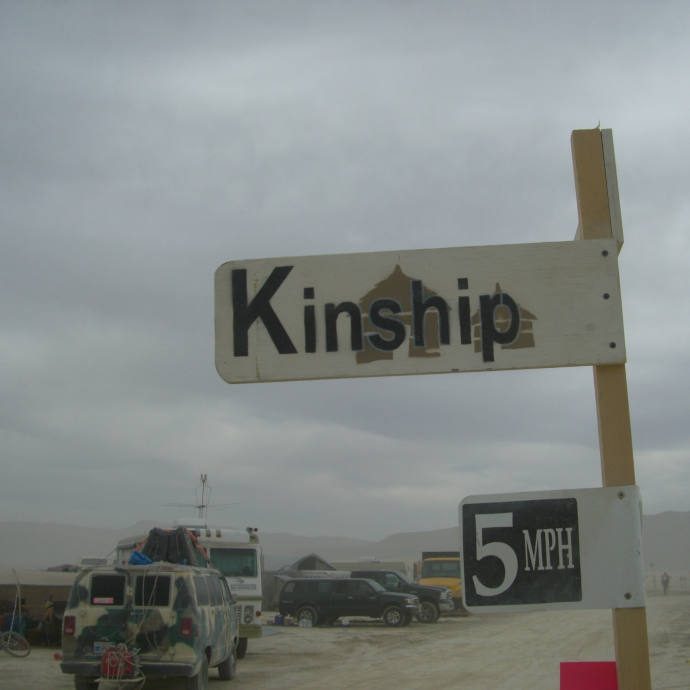While Western political leaders overtly inflame followers by ascribing innate difference to Others, the lucidity and coherence of Marshall Sahlins’ 2013 monograph What Kinship Is – And Is Not is a draught of cool water. In it, Sahlins reminds the reader that kinship – defined as the mutuality of being which establishes you, your fortunes, and your fate as an essential part of me, my fortunes, and my fate (p. 2) – is a relationship which is determined by culture, not biology. Having articulated this definition of kinship at the beginning of a slim volume (there are only eighty-nine pages of text), the author illustrates his theory that consanguinal relationships are subordinate to the ‘particular cultural logics of relatedness’ (p. 9) with a rich and varied selection of examples. For general audiences, this review will briefly summarize the contents, range, and argument of the publication, outline a critical discussion of a key issue Sahlins raises, and evaluate the book for its strengths and weaknesses.
What Kinship Is – And Is Not holds a tightly focused discussion on the theory of kinship, a concept central to anthropology since the 1871 publication by Henry Tyler Morgan of Systems of Consanguinity and Affinity in the Human Family.
Sahlins’ book is divided into two chapters. The first, ‘What Kinship Is – Culture’, argues that either the greater kinship order is already present in persons at birth, as by the participation of ancestors in reproduction, or else kinship relations are largely established in life, as by actual participation in the existence of others (p. 87). Post-natal means of kinship formation may include name-sharing, adoption, shared suffering, reincarnation, blood brotherhood, commensality, etc.; such methods of making kin appear to be limited only by the human imagination. To support his thesis, Sahlins’ self-confessed ‘Frazerian’ approach draws from historical documents such as the works of Aristotle and the Mahabharata, and from ethnographic studies of groups as distinct as the Maori, English townspeople, the Inuit, and the Toraja of Sulawesi.

A distinct advantage of Sahlins’ cultural approach to kinship theory is the clarity it brings to matrilineal kinship systems, hitherto very confusing for this reviewer since explanations usually attempt to explain matrilineality with respect to genealogy.
The value of centralizing cultural logics of relatedness is seen in the ease with which Sahlins illuminates the issue.
For example, for people whose culture identifies maternal blood as the essential substance transmitted to children for the establishment of kinship relations, a child will be related from birth to her mother’s sister in the same way she is related to the woman who bore her, as her mother and her mother’s sister have the same blood (from their mother). The maternal blood shared by her mother and her mother’s sister means the child will be related to her mother’s sister’s children in the same way as she is related to her ‘own’ siblings, all having the same maternal blood (from their grandmother)(p. 75). Further, this insight also helps to explain distinctions between parallel cousins (children of one’s mother’s sister, who share, in this instance, maternal blood) and cross-cousins (children of one’s mother’s brother, who have different maternal blood).

Photo by beetru (flickr, CC BY-NC 2.0)
Similar comprehensibility may be found throughout Sahlins’ book, making it a strong contribution to the field of anthropology and useful for the general reader looking to understand more about this topic. If there is one shortcoming to the publication, it is the ‘Frazerian’ approach adopted by the author, which thwarts a steady development of the argument and instead lays before the reader such a volume of examples demonstrating specific aspects of the theory that intelligibility is occasionally obscured. Nevertheless, Sahlins’ argument is convincing and the lucidity of his prose makes What Kinship Is – And Is Not a pleasure to read.
References:
Henry Tyler Morgan. 1871. Systems of Consanguinity and Affinity in the Human Family. 1997 reprint of the 1870 edition, University of Nebraska Press.
Marshall Sahlins. 2013. What Kinship Is – And Is Not. Chicago and London: University of Chicago Press. 110 pp. Pb: $16.00. ISBN: 9780226214290
**********
Featured image by loganinsky (flickr, CC BY-NC 2.0)






